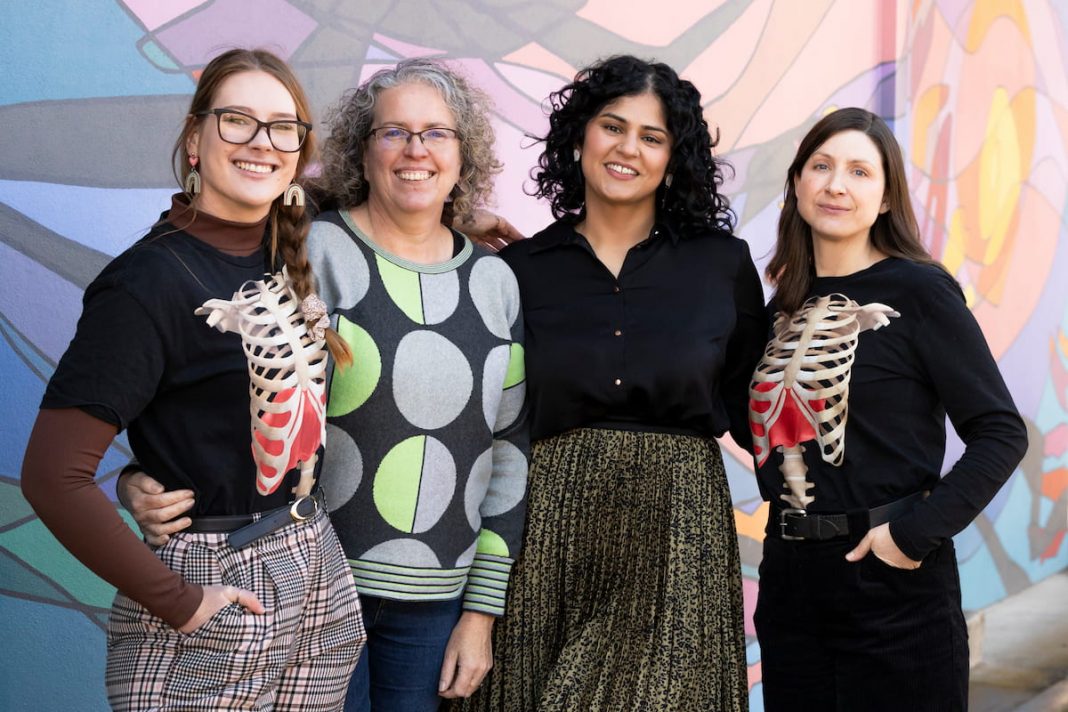Old Parliament House, the John Gorton Building, the National Carillon, and the National Museum of Australia are just a few of the many local buildings and monuments that will be lit up green for World Hepatitis Day, Friday 28 July.
Green, the colour of life and vitality, will shine in honour and acknowledgement of those affected by viral hepatitis. It is also an urgent demand for action from Canberra’s decision-makers to give the “green light” in prioritising the elimination of viral hepatitis by 2030.
“Hepatitis can’t wait,” says Executive Director of Hepatitis ACT, Sarah Ahmed. “Australia’s Department of Health has signed onto the World Health Organizations’ goal to eliminate hepatitis by 2030.”
Worldwide, 325 million people live with hepatitis, and more than 1.1 million lives are lost each year to hepatitis B and hepatitis C.
“Australia has committed,” Ms Ahmed says. “We cannot continue to do business as usual and hope that something will change.
“We need more resources and more funding to take hepatitis awareness, education, testing and treatment to the next level if we are to achieve our goal of elimination by 2030.”
There is a long way to go in the next seven years. According to Ms Ahmed, the first step towards elimination is education.
“The misinformation and fear around viral hepatitis is the first hurdle that we need to get over.”
“There is a vaccine for hepatitis B. There is a cure for hepatitis C. There is no stigma in getting tested.”
“We assume that hepatitis C is only amongst a certain group of people. That’s not true,” Ms Ahmed says.
“We have met many people who contracted it as teenagers, from a dodgy tattoo or piercing – things we have all done in our youth. Most hepatitis B is spread from mother to child during pregnancy. There should be no stigma attached to this.”
If you were born before 1990, it is important to check whether you are vaccinated for hepatitis B.
“There is an easy cure for hepatitis C; a few pills a day for eight to 12 weeks with minimal side effects.”
Hepatitis is the largest contributor to hepatocellular carcinoma, the most common form of liver cancer, which is one of the fastest growing causes of cancer-related deaths in Australia.
“No one should have to die from liver cancer because they had hepatitis B or hepatitis C. It’s totally preventable,” Ms Ahmed says.
One prick is all it takes
Since 2022, Hepatitis ACT provides finger prick testing for hepatitis C. Canberrans no longer have to go get a blood test.
“It’s a quick little finger prick, a few drops of blood, and you get your results within the hour,” Ms Ahmed says.
The service will continue to be funded until June 2024.
“This project could not have gone ahead without the help of ACT Health,” she says. “However, one-off funding is not the way to go. We need sustained continued investment in the sector.
“We need more initiatives like this to tackle hepatitis B as well.
“Canberra has been leading Australia in so many ways, from our Covid vaccination rates to our harm reduction policies. We could once again be leaders in eliminating hepatitis by 2030.
“Our aim here at Hepatitis ACT is to be out of a job by 2030,” Ms Ahmed smiles.
Hepatitis ACT is open Monday to Friday 9am to 5pm and is located at 36 David Street, Turner.
Find one of these landmarks glowing green on World Hepatitis Day 28 July 2023, and snap a pic, tag @hepatitisact on socials with the hashtag #ACTGlowsGreen for a chance to win a $100 gift card.
- Old Parliament House
- John Gorton Building
- Treasury Building
- Shine Dome
- The National Carillon
- The Canberra Centre
- Telstra Tower (23-30 July)
- Royal Australian Mint
- Light rail stations
- National Museum of Australia
To find out more, visit hepatitisact.com.au, email [email protected] or call 1800 437 222.



